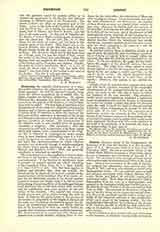

Deshon, GEORGE, priest of the Congregation (or Institute) of St. Paul the Apostle, b. at New London, Conn., U.S.A., January 30, 1823; d. in New York, December 30, 1903. He was a graduate (1843) of the United States Military Academy at West Point, where he was a classmate and roommate of General U.S. Grant. His standing in class was high (second) and he afterwards taught mathematics and ethics at the Academy. Deshon was promoted to the rank of captain, but resigned his commission, was received into the Church in 1851, and soon after became a novice in the Redemptorist Order. He was ordained priest in 1855 and became associated with Fathers Hecker, Walworth, Hewit, and Baker, all regularly employed in missionary work. With them he obtained in 1858 a dispensation from his vows as a Redemptorist, and assisted in the formation of the new Paulist Institute, the first house and church of which were built in New York in 1859. He remained in this house during the rest of his life, being novice-master for several years, and afterwards assistant superior and in charge generally of the temporal interests of the community, which owed much to his business ability. He also superintended throughout the building of the church of St. Paul the Apostle, in which his skill and knowledge as an engineer, acquired at West Point, were of great service. Father Deshon spent a considerable part of his time on the missions, in which he was specially eminent in the practical instructions, though his sermons were also most effective. A volume of his parochial sermons was issued in 1901. He published in 1860 a book entitled “Guide for Catholic Young Women”, which acquired an abiding popularity. Father Deshon was elected superior general of the Paulist Institute in 1897. At that time houses had been founded in San Francisco, and at Winchester, Tennessee. The last important act of his life was the founding of the Paulist house in Chicago, for which he arranged with Archbishop Quigley in the fall of 1903. Though his life-work was so largely practical, he was noted for his interior spirituality, his favorite saints being the hermits and cenobites of the desert, and his spare time was always devoted to recollection and spiritual reading, in which he had evidently been occupied on the last night of his life, before retiring. He died suddenly of heart failure about midnight, having been just able to ring for assistance, and to receive the last rites of the Church.
GEORGE M. SEARLE

